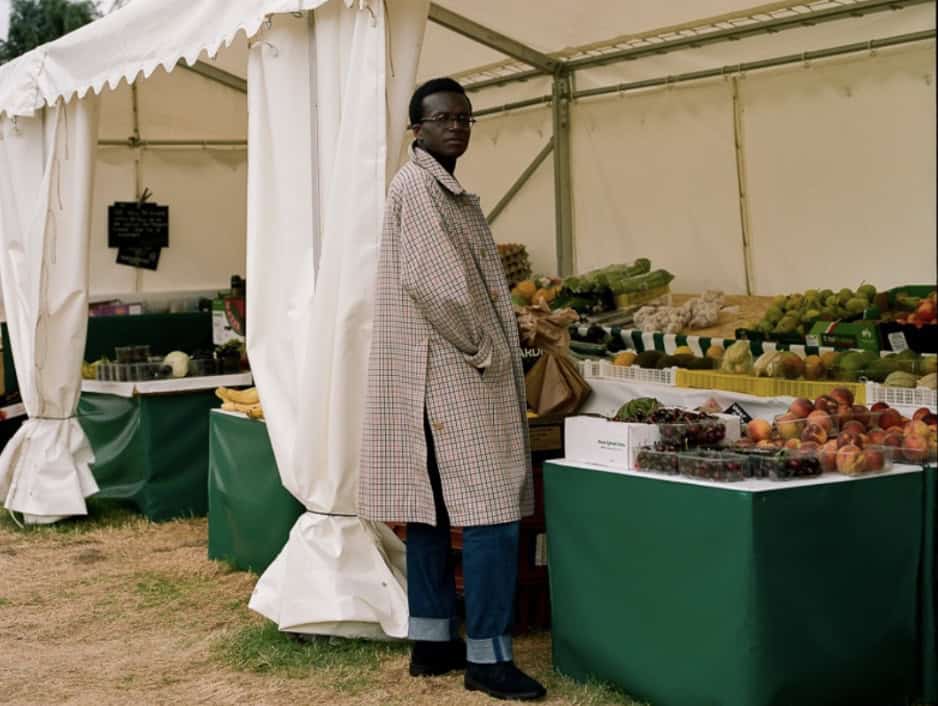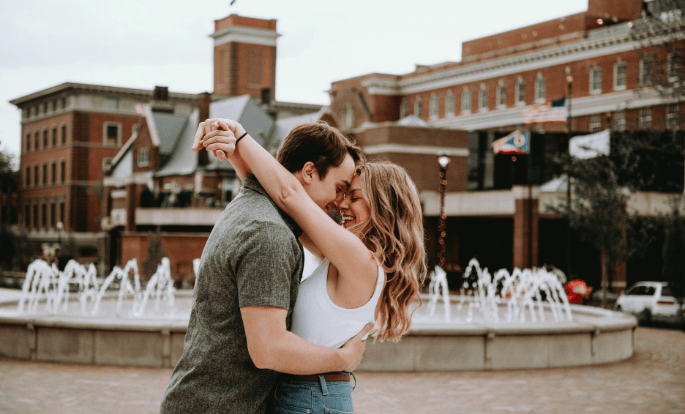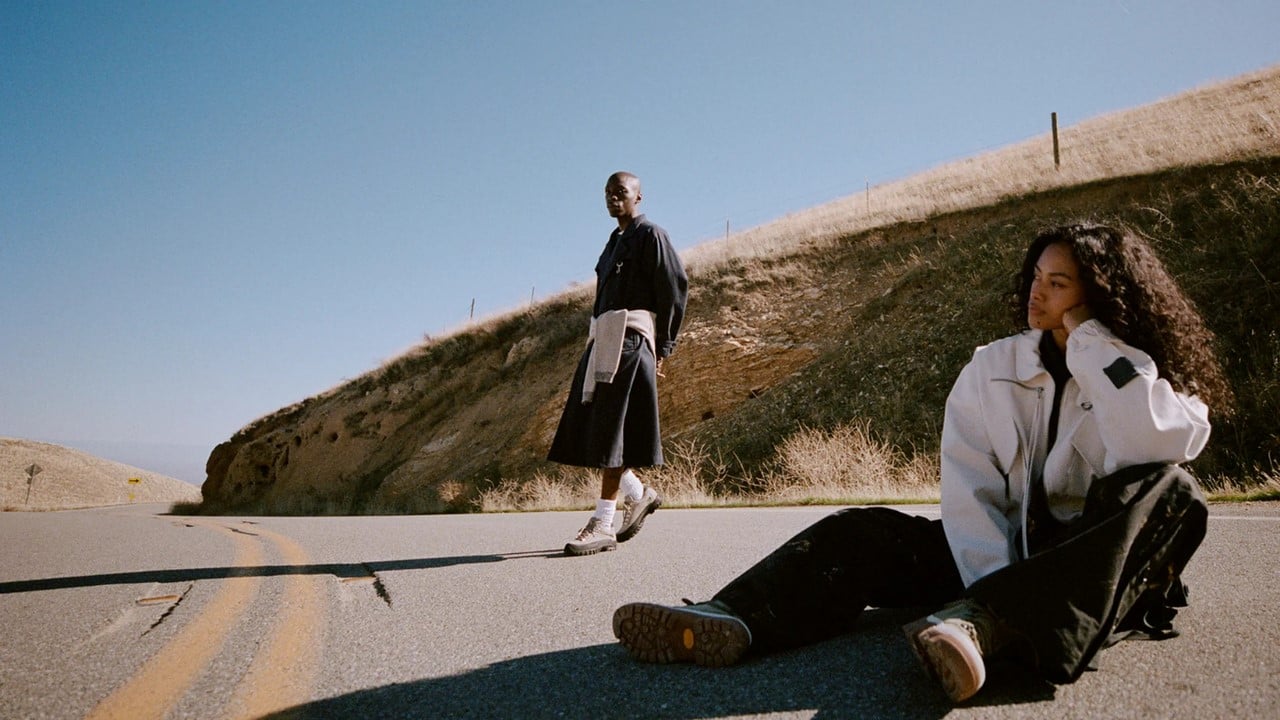17 Best Black Dress Shoes For Men in 2025
Dec 26, 2025Original Madras Trading Company – Permanent Style
- Aug 10, 2024
- 0 Comments
285
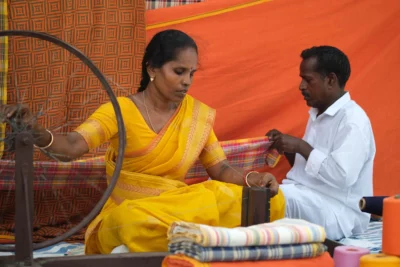
By Manish Puri
In 1973, Ranjit Shah left his hometown of Madras (now Chennai) carrying a suitcase full of cloth swatches and emigrated to New York City. Within a few years, he’d established Original Madras Trading Company (OMTC) on West 38th Street, and secured contracts to supply both cloth and finished garments to the giants of American menswear.
Ralph Lauren, Brooks Brothers, Gant, J Crew, J Press, Tommy Hilfiger and L.L. Bean – all became customers of OMTC.
Fifty years later, and still based in the same headquarters in the Garment District, the business has passed to Prasan – the third generation of the Shah family. While Prasan is keen to preserve their legacy by continuing to supply machine-loomed cloth (madras being just one of them) to major retailers, he’s also reinvigorated OMTC’s foundational offering: authentic hand-woven madras.
All of the Madras garments released under OMTC’s own-label (established by Prasan in 2020) are hand woven on a handloom by a single weaver.
Produced at a rate of one metre every two to three hours, hand weaving is 30-40 times slower than standard machine loomed cloth. So why do it?
First, it’s a sustainable process: handlooms require no power, and the overarching philosophy of hand weaving – slow, methodical, mindful – often results in less wastage than mechanised production.
Second, there’s a design advantage – machine looms are typically limited to eight colours of yarn, but there’s no restriction when it comes to handlooms, which opens up the possibility of unlimited variation and depth of colour.
However, as you might expect, the primary benefit lies in the quality of the cloth itself. Hand-woven fabric has a texture and personality that’s often lost to the uniform precision of the power loom.
It’s for this reason, having worn them for the last three summers, that the OMTC shirt has become my favourite madras shirt, and an excellent warm-weather option.
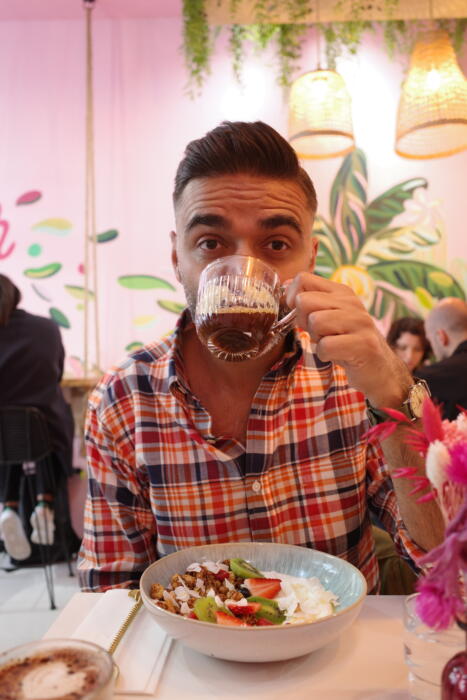
My N°5 classic button-down shirt ($185/£160) in a standard weave – the breathable yarn construction and finish traditionally associated with Madras – is fantastically soft and lightweight (2.85oz Indian cotton) without feeling too delicate. As a result, the OMTC Madras was the only shirt I felt comfortable wearing on a recent trip to Mexico, where the daily temperature consistently topped 35 degrees celsius.
The fit helps in this regard too – comfortable through the chest and waist, with sleeves that can easily be pushed or rolled up past the elbows. A classic fit.
The soft collar is very lightly fused. Perfectly fine for casual wear, but those who want to pair the shirt with formal tailoring or demand a collar roll that coils up and over like a cobra’s head might need to consider other options.

The shirts are finished to a neat and tidy standard. Prasan told me that, as Madras is at heart a casual cloth, they use 16 stitches per inch (spi) – high for casual shirts but below the 18-20 spi one might see on dress shirts.
Regardless of how fine the finishing is, I will say that my OMTC shirts have held up great over the last couple of years, even surviving the rigours of a Mexican laundry on my travels.
The one detail I’m not a huge fan of is the metal shank button at the bottom of each placket (above). However, having spoken to Prasan about it, I’ve since learned that each button is inscribed with the Tamil symbol for Om – a sacred symbol in Hinduism – and now I can feel my ancestors’ gaze burning on my neck (in my defence, I know the Hindi symbol). In any case, given that I seldom wear my shirts untucked, the button isn’t a major deterrent.
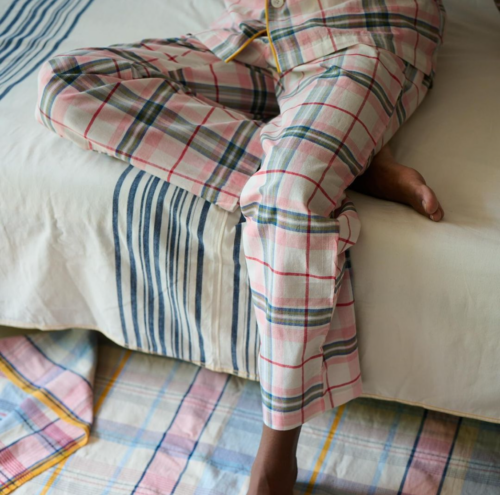
For a small brand, OMTC offers quite a lot of styles in different weaves and weights. They can appear slightly confusing at first glance, but their ‘N°‘ classification does help decode it.
I’ve tried various models and I really like the pyjamas (especially the ones above), the dressing gowns and the short-sleeved shirts. Last autumn, I also picked up one of their winter Madras shirts – a heavier plain weave that has been softly brushed – which is very cosy and made a nice alternative to flannel overshirts.
There are some designs that I’m not as keen on – such as the baseball shirt – but you have to respect OMTC’s efforts to broaden Madras’s appeal beyond the Anglocentric notion of it being just an Ivy button-down cloth.

If you like the idea of hand-woven fabric, but you’re looking for something a bit different from the OMTC designs, there is one additional advantage of hand weaving that might help. The production minimums (the minimum length of cloth that needs to be produced for a run) are much lower for handloom than a machine equivalent.
This means OMTC can experiment with different weaves and styles, but also collaborate with smaller makers and retailers that might otherwise be deterred by the minimum volume of machine-woven cloth that they would have to commit to buying. I know Simon is working on something for Permanent Style, hopefully for next year.
Two current collaborators with markedly different offerings spring to mind. The first is The Armoury, who have reproduced their house button-down model (Isaac) in three hand-woven OMTC cloths (above). It’s a more classic style than the OMTC own-label version, with a generous collar roll to suit more tailored looks.
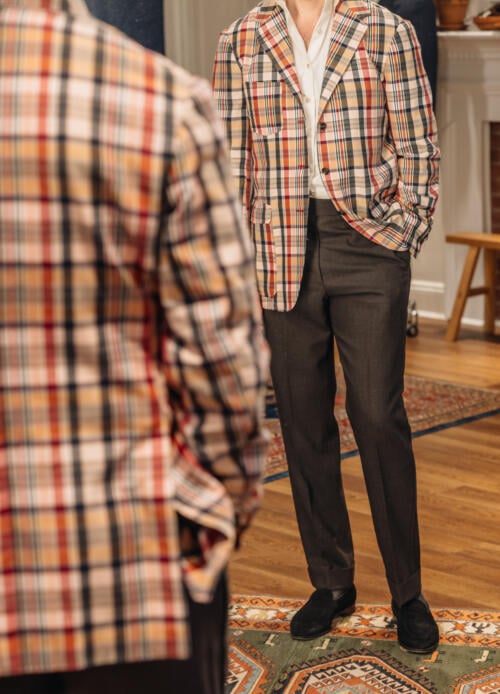
The Armoury have also released a version of their Model 11 jacket in an OMTC compact weave (above) – still pretty light at around 5oz, but much more densely woven than the standard weave.
I asked Prasan whether they’d ever sell lengths of Madras cloth to be made up into jackets or other tailored clothing, and he said they’re working on something in the upcoming months. However, in the meantime if a reader is looking for a length, he invites them to contact OMTC via the website or Instagram and they can discuss options.
The second collaboration is with Nigel Cabourn Japan, who have produced a range of different products – shorts, hats, dungarees and shirts (below) – with a more regularly-patterned plaid made of bolder colours in a relaxed silhouette. This is the first such release in what’s scheduled to be an ongoing seasonal collaboration.

On the subject of pattern and colour – two of the defining characteristics of madras – I know it’s something that a lot of guys can be apprehensive about, especially those that dress more conservatively or classically.
It’s one of the reasons why I think madras shirts tend to have a lower ‘hit rate’ than other shirts. Show me five blue chambray shirts, and I might like four. Show me five in Madras, and I’ll probably like two, and you might like two different ones.
That’s because picking the right Madras is a highly subjective choice, and one that I think should be informed by what colours you like and, by extension, what colours are already in your wardrobe, because that can help guide how you can wear the shirt.

For example, if the look above (shot by Jamie Ferguson) was described to me, I’d be anticipating a hot mess.
Velvet slippers, dazzlingly white jeans, a blush-pink jumper and a multi-coloured shirt; in theory, every one of those garments sounds bold, and ‘the rules’ might caution you to temper them by combining with more neutral and fewer attention-grabbing components.
In practice, because each colour is echoed and anchored by my OMTC shirt, this is one of my favourite combinations ever, and a perfect encapsulation of what Madras clothing means to me: a joyous and colourful celebration of summer – albeit an English one, where a jumper is never too far from hand.
Manish is @the_daily_mirror on Instagram

Publisher: Source link


